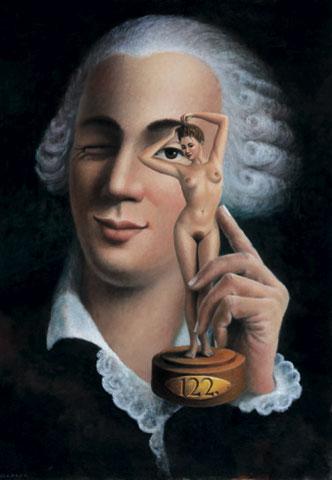Aquadisia
In the near future, can a new species of oysters transform toxic water into a new kind of aphrodisiac? A public sentient machine of more perceptible humans that embrace a more sensual interconnection with the cycle of life. One that could lead to a better handling of this ecological crisis.



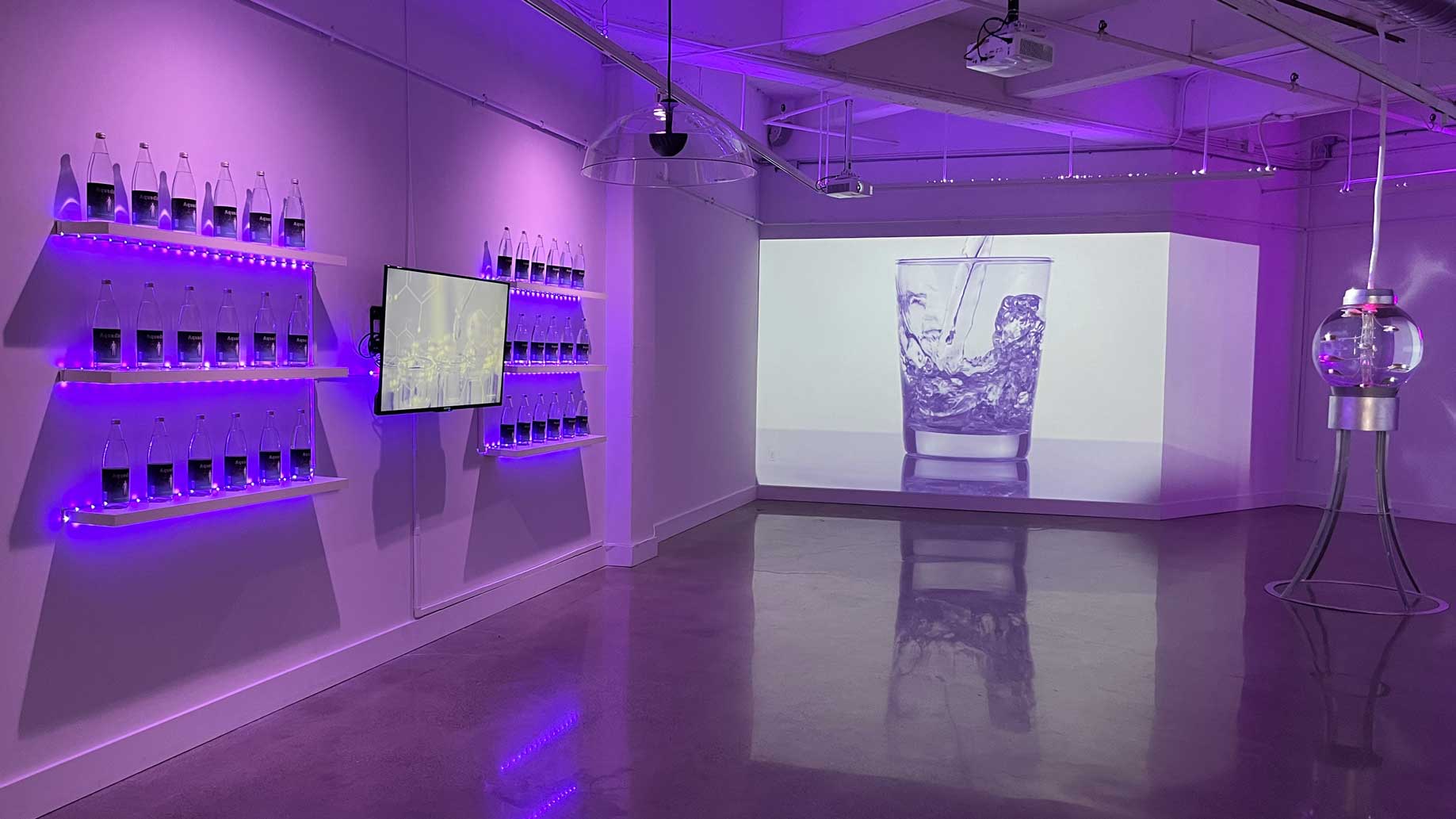


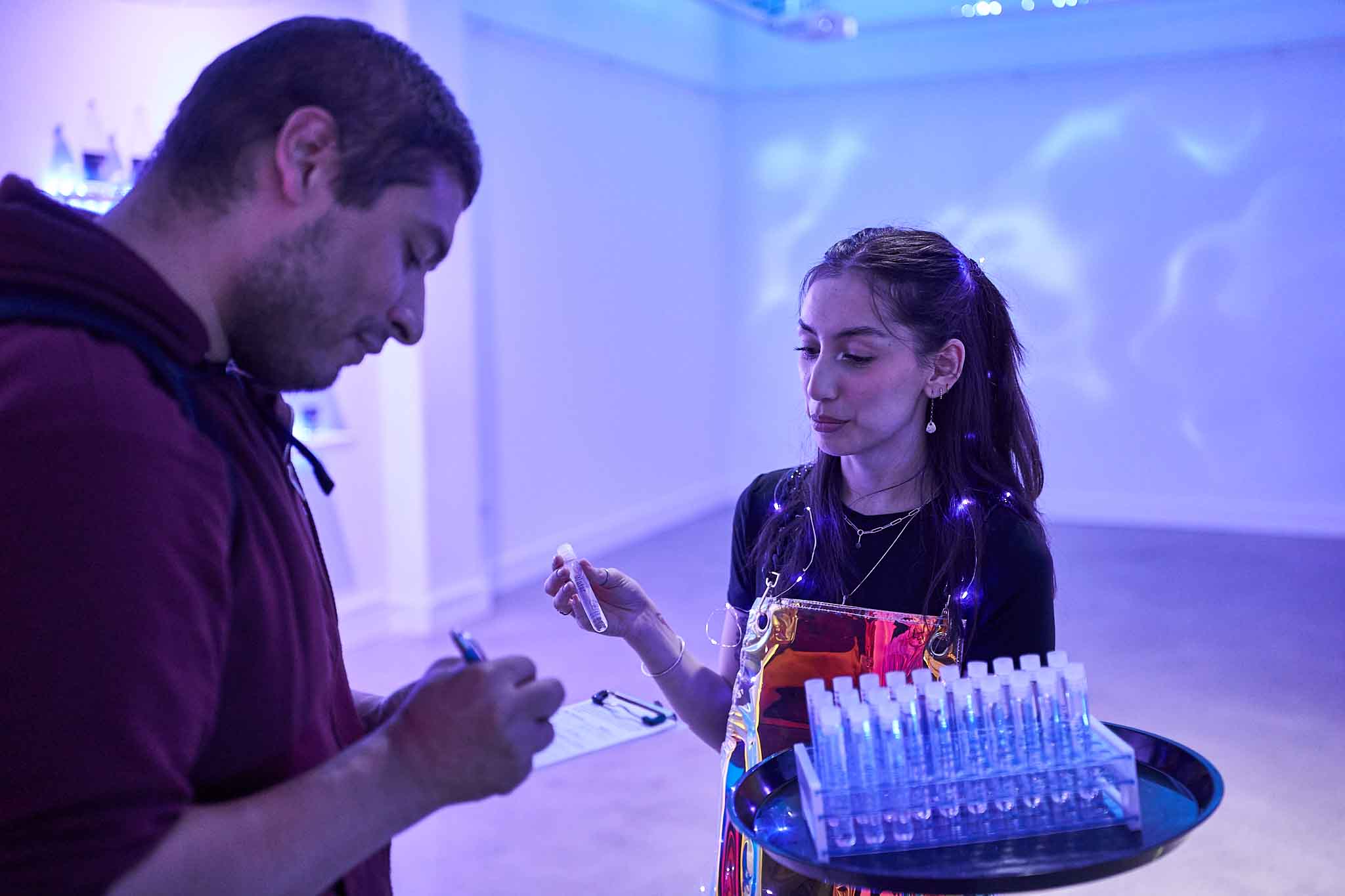
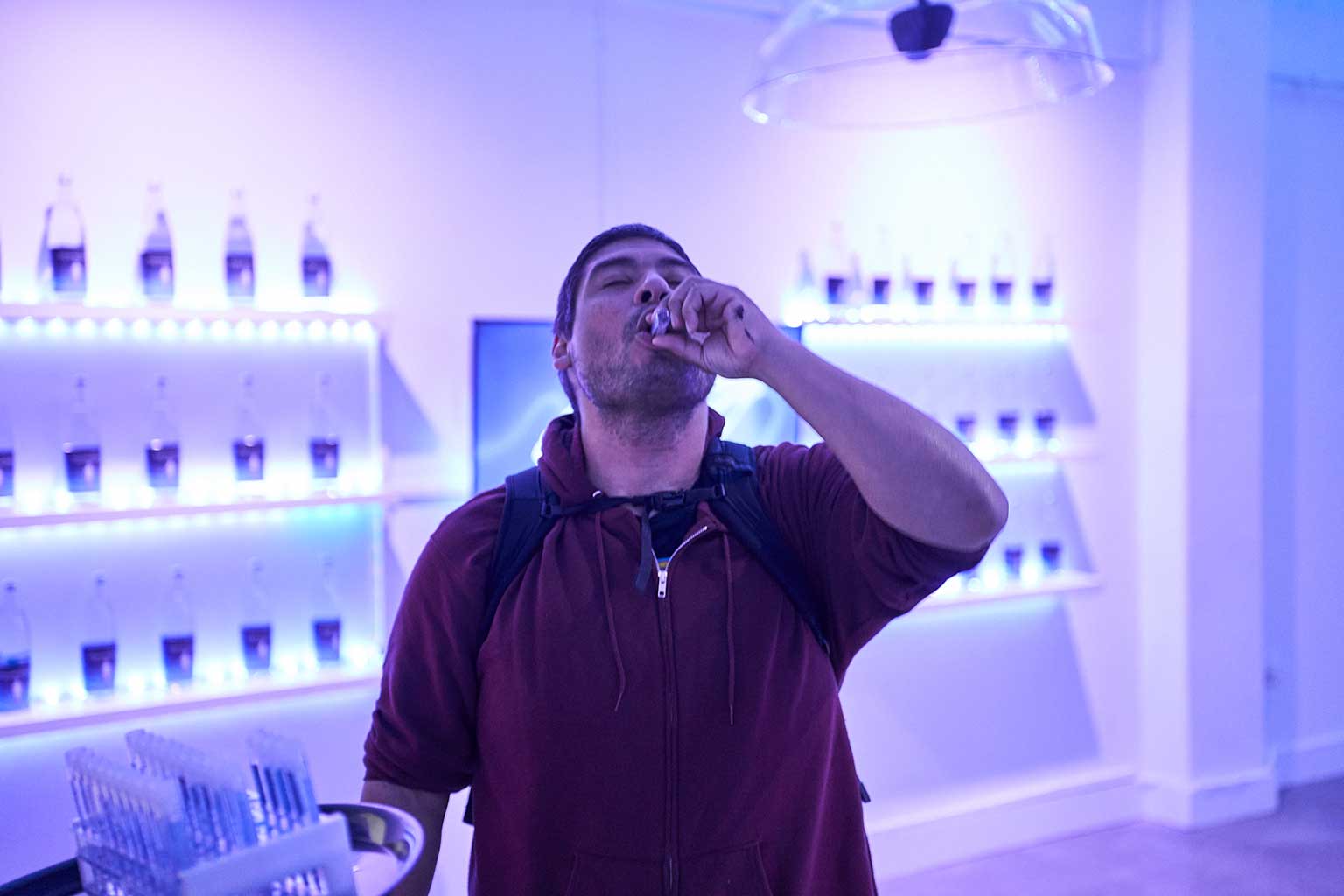
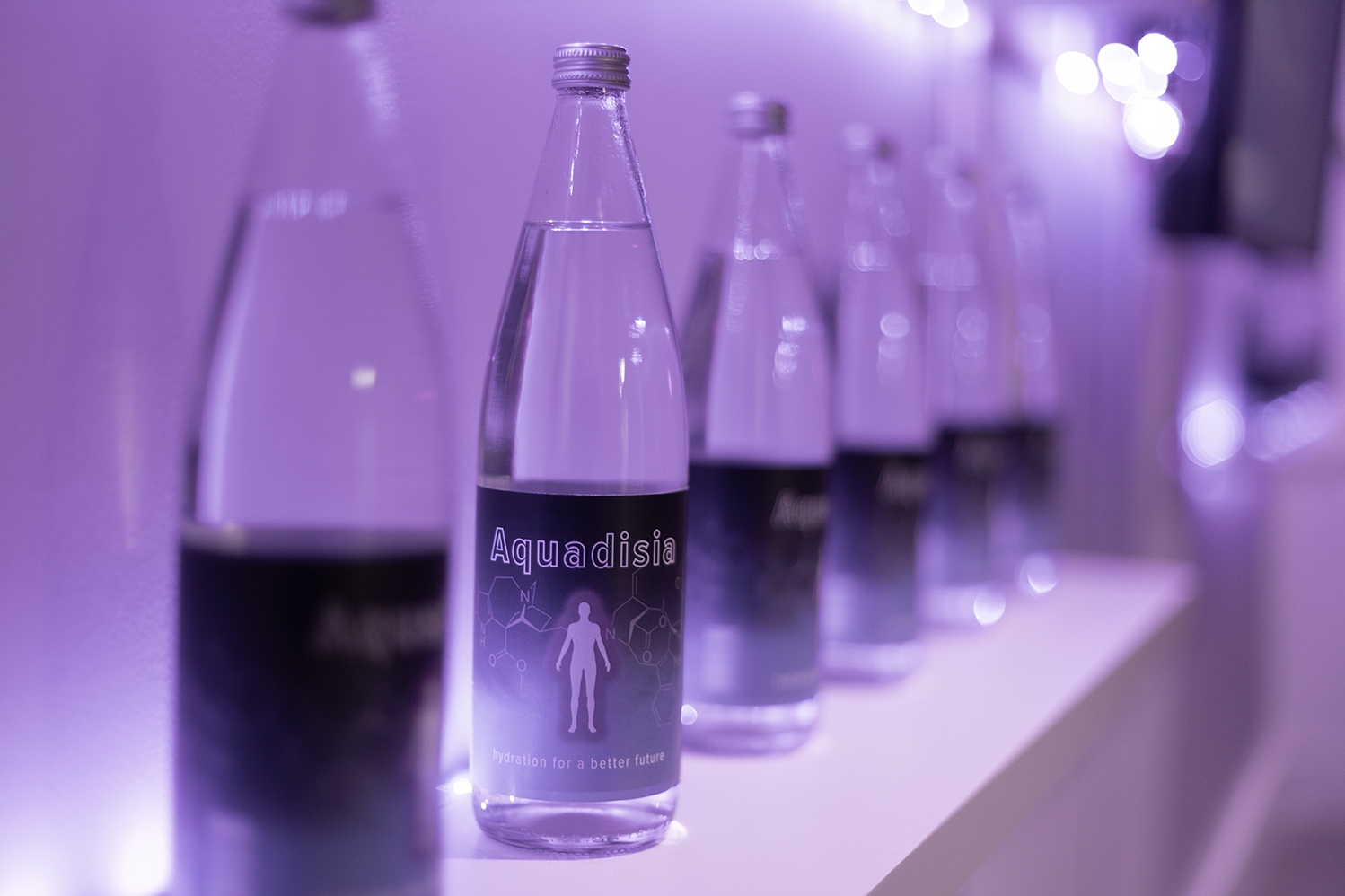

Above images from solo exhibition “Aquadisia” at Buffalo Art Studio, Buffalo, NY, September 29- November 9, 2024.
The exhibition was designed to resemble a showroom for Aquadisia WaterTM. During the exhibition opening and at special hours of the exhibition, gallery visitors were invited to try a new vintage of Aquadisia WaterTM sourced directly from the Great Lakes and created by our bioengineered oysters. Since the water is not yet FDA approved, participants had to answer questions about their health and ethics around bioengineering before receiving a vial to drink. Image credits: Nilson Rivera.
Images below from “Meta.Morf 2022 Ecophilia: Trondheim International Biennale”
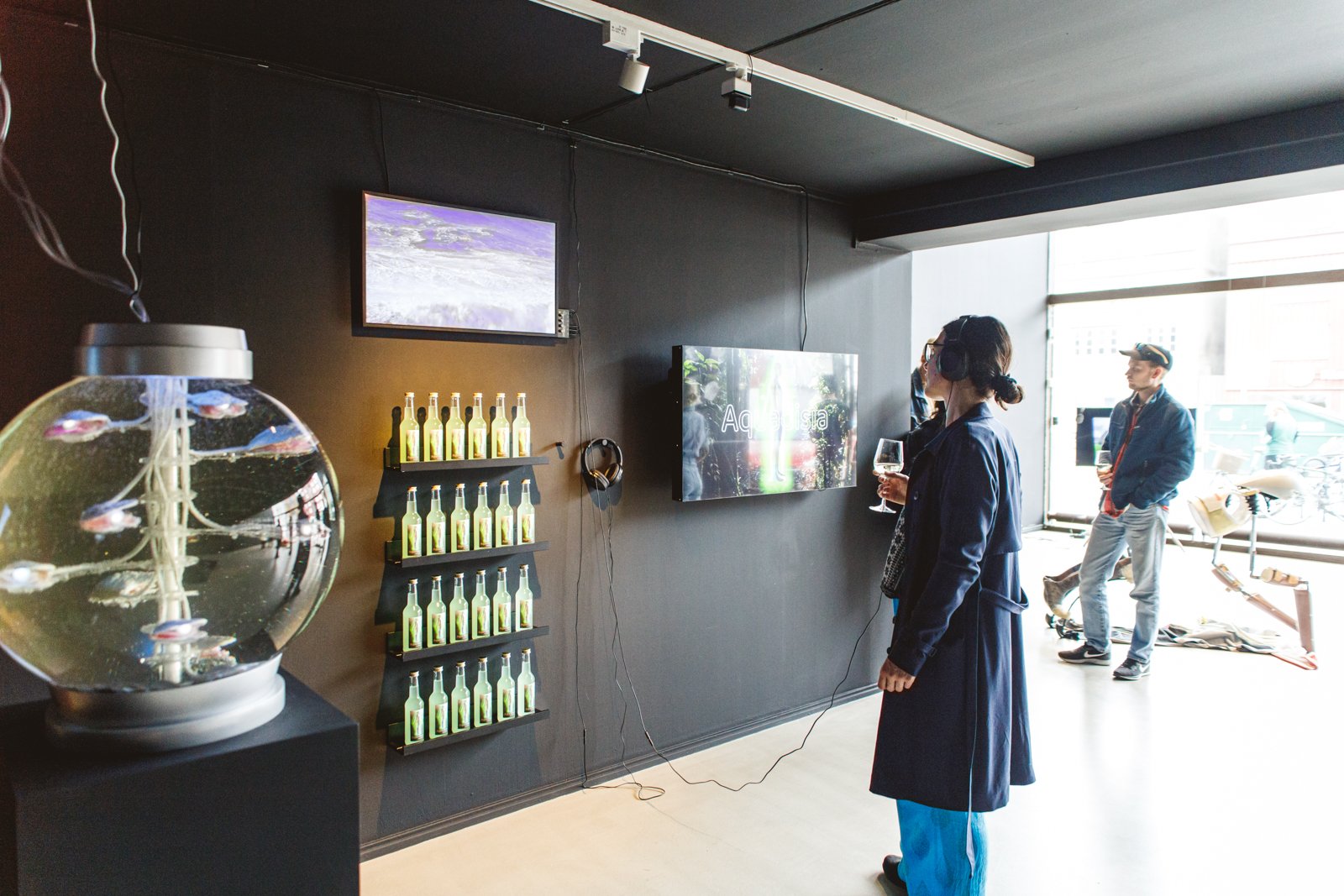
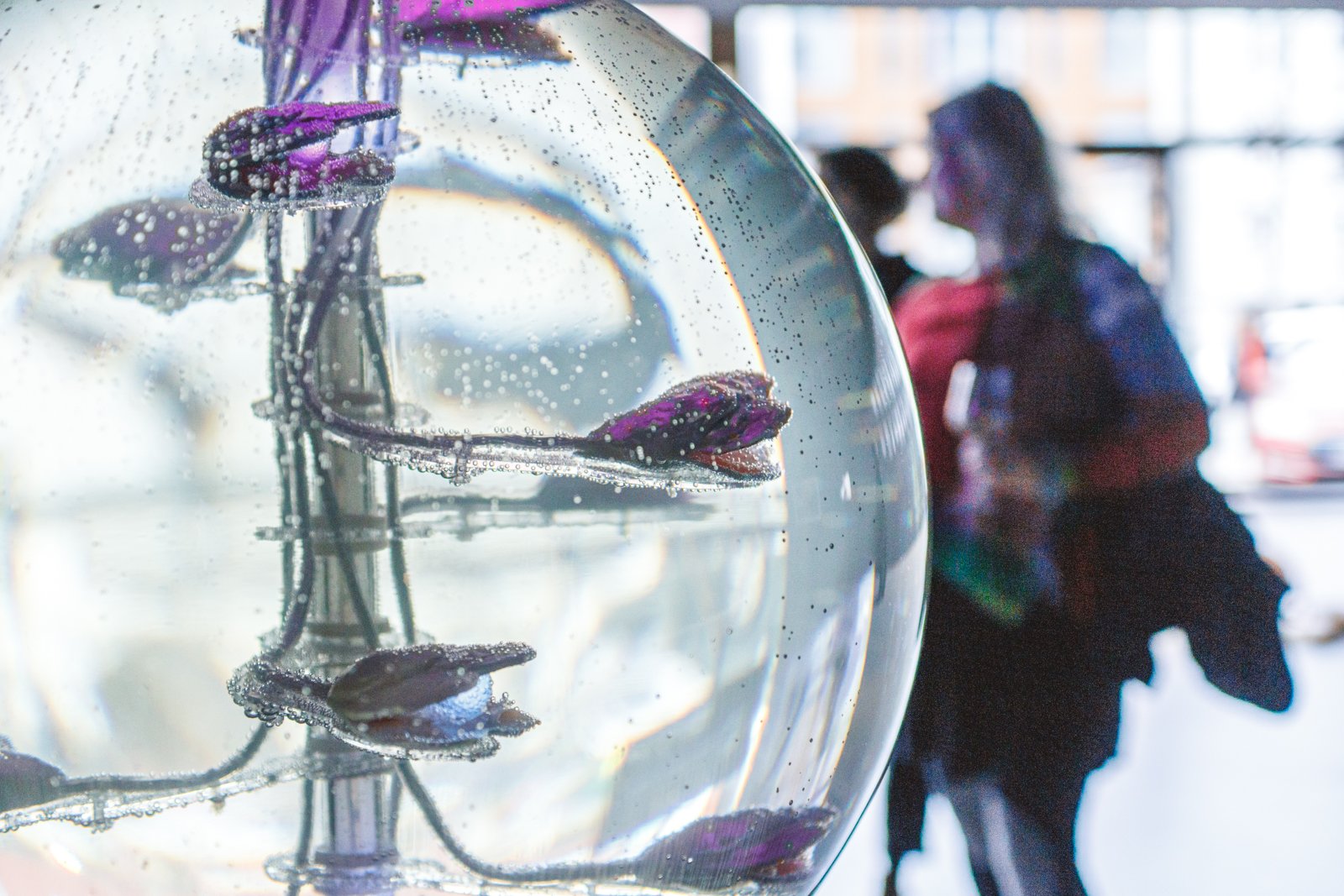


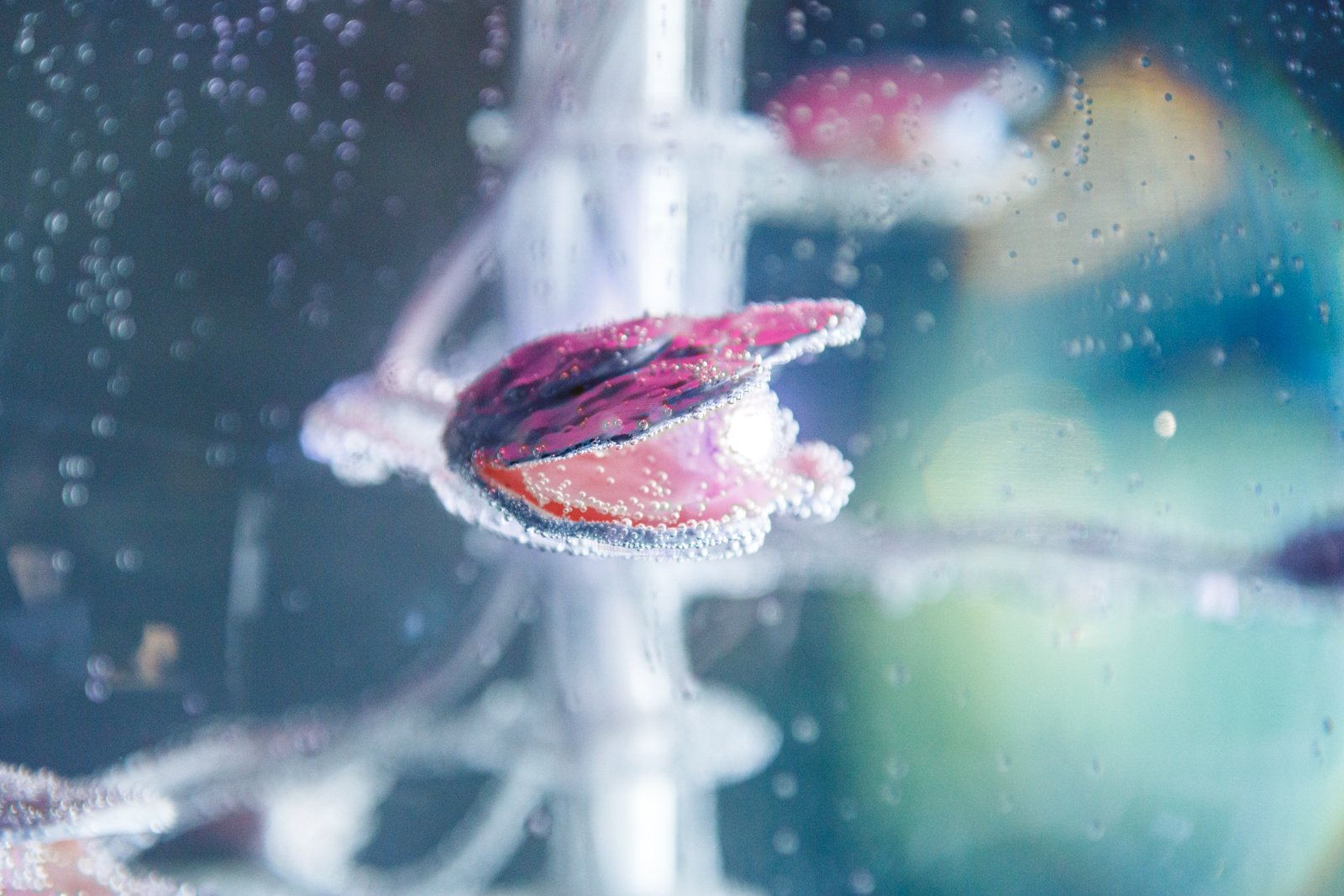

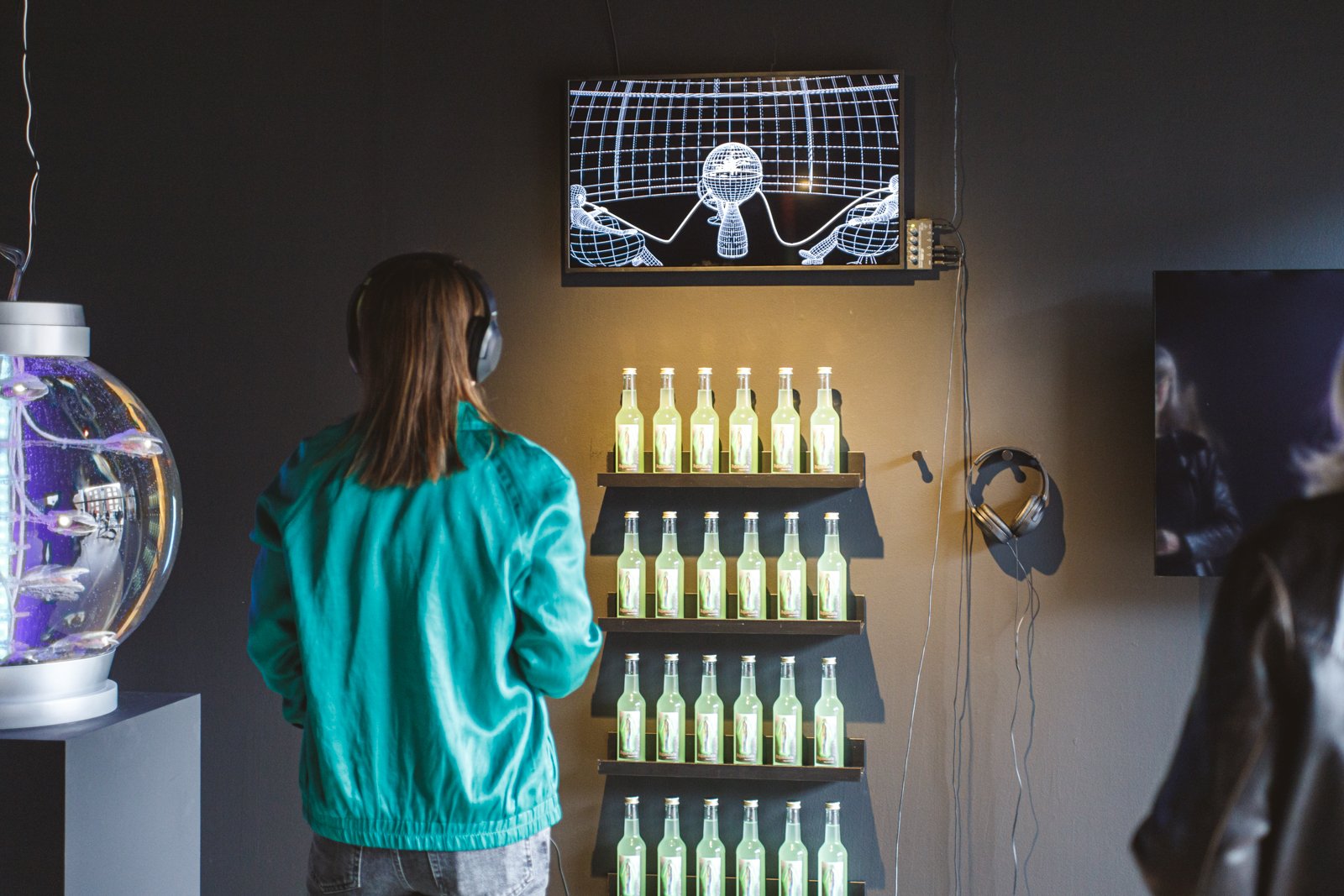
Above images from “Meta.Morf 2022 Ecophilia: Trondheim International Biennale” April 1 – August 14, 2022. Image credits: Juliane Schütz.
Installation features an informational video about Aquadisia water (full video below) and a video showing additional 3d modeled footage of the technology. The circular orb bubble is a speculative model of the aquaculture vessel and enables people to drink the Aquadisia water through tubes (on wall). Bottles of Aquadisia water are available on the wall.
“Aquadisia” exhibition walk through from “Meta.Morf 2022 Ecophilia: Trondheim International Biennale”. Video footage Sigrid Erdal. Sound design Suzanne Thorpe. 3D animations: James LaPlante (oysters), Gary Jacobs
Aquadisia video in installation
Video created and edited by Stephanie Rothenberg
Sound design: Suzanne Thorpe
3D animations: James LaPlante (oysters), Gary Jacobs
Actor: Shasti O’Leary Soudant
Post-production support: Anna Chiaretta Lavatelli
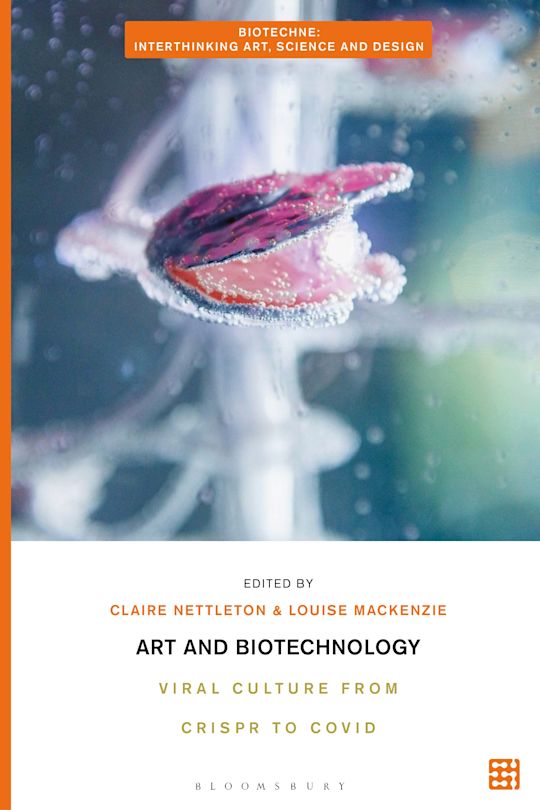
“Aquadisia” featured on the cover of “Art and Biotechnology Viral Culture from CRISPR to COVID” by Claire Nettleton and Louise Mackenzie. The book also includes my experimental essay on the project.
https://www.bloomsbury.com/us/art-and-biotechnology-9781350376052/
Project Description
Soft, fleshy and resourceful, the oyster is a magnificent and extremely talented creature of the sea. It was almost extinct by the mid 20th century due to industrial pollution and massive overfishing. One tiny 2-inch organism can filter up to 50 gallons of polluted water per day. Its home created from its own layered shells combine with others to form natural reef systems that protect coastlines against rising sea levels and provide habitat for other species to thrive. And legends speak wonders of its euphoric powers as an aphrodisiac.
Imagine if we could bioengineer this magical species to convert toxic water into an even more transformative formula and piped it into public drinking water? Could we create a public sentient machine of more perceptible humans? A perception that enables a more sensual interconnection with the cycle of life that leads to a better handling of this ecological crisis? One that transforms energy into an agential sensual power?
“Aquadisia” is an environmental science fiction that manifests in a variety of formats online and offline including installations, videos and performances. It explores the ethical and economic contradictions within the desire to be more sustainable both individually and on a global scale. The project focuses on the neoliberal concept of natural capital and what is known as ecosystem services, the provisioning and regulating of natural resources for human survival. One area that has received much development is aquaculture. It is a form of sea farming that has been gainfully employed to more sustainably secure future food resources and offset the environmental degradation of land-based industrial farming. Yet as these systems scale up they become another extraction machine presenting a new set of environmental problems.
Inspired by black feminist writer Audre Lorde’s notion of the erotic as a power of feeling, “Aquadisia” posits more-than-human sentience as a lubricant to speculate a new kind of eco-machine. The project plays with the libidinous myth of the oyster, a hermaphroditic organism, being bioengineered in a futuristic aquaculture farm. Technology is eroticized as intersexual bioengineered cyborg oysters convert toxic water into an aphrodisia-inducing fluid called Aquadisia Water given out freely to the public.
Lorde challenges the patriarchal overtones in how the word erotic is used, not only redefining but reigniting the erotic as a physical, psychic and emotional energy that can’t be reduced to a commodified good or systematized affect. Can this new and improved bioengineered oyster push humans past the mere libidinal and sexualized state of capital conquests of other bodies and into a new state of sentience – a Sentience 2.0? We invite you to take a drink!
Project support:
“Aquadisia” has been developed and supported through the following: Artist residencies at Z/KU Center for Art and Urbanism in Berlin and Xenoform Labs in San Francisco; Fellowship at the Roux Center for Environmental Studies at Bowdoin College in Brunswick, Maine; University at Buffalo Department of Art; and this project is made possible, in part, with funds from the Media Arts Assistance Fund, a regrant partnership of the New York State Council on the Arts Electronic Media and Film Program and Wave Farm, with the support of Governor Andrew Cuomo and the New York State Legislature. Laboratory research conducted at Coalesce Center for Biological Art at the University at Buffalo. 3D model animation created by Sputnik Animation in Portland, ME and animator Gary Jacobs.
Featured Exhibitions and Screenings
“Aquadisia” Solo Exhibition
September 29- November 9, 2024
Buffalo Art Studio, Buffalo, NY
https://www.buffaloartsstudio.org/events/stephanie-rothenberg-aquadisia-september-27-november-9-2024/
Meta.Morf 2022 Ecophilia: Trondheim International Biennale
April 1 – August 14, 2022
Trondheim, Norway
https://metamorf.no/2022/program
4th Renewable Futures in conjunction with FELT (Future of Living Technologies)
November 4-5, 2021
Oslo, Norway (virtual)
Screening of “Aquadisia” water promotional video. Curated by Jens Hauser and Kristen Bergaust.
https://feltproject.no/renewable-futures/
BIFF Buffalo International Film Festival
October 7-11, 2021 (and in 2024 BIFF Offscreen)
Screening of “Aquadisia” water promotional video (Silo City, Buffalo, NY).
https://www.buffalofilm.org/events/biff-offscreen-science-meets-sentience-2-0/
https://www.buffalofilm.org/lineup/events/biff-offscreen-stephanie-rothenbergs-aquadisia/
Why Sentience? ISEA 2020
October 13–18, 2020
Montreal, Canada (virtual)
Online exhibition and live Zoom performance
International Symposium on Electronic Arts
New Media Artspace (Solo Exhibition)
February 18–May 1, 2020
Baruch College, New York, NY
View the 4-Channel Video Installation
Goodbye Cruel World It’s Over
November 27 – February 2, 2020
Weltkunstzimmer, Düsseldorf, Germany
Video installation
View exhibition catalog
Project Presentation
SLSA Society for Literature, Sciences and the Arts annual conference
September 30- October 3, 2021
University at Michigan, Ann Arbor, MI (virtual)
Artist talks and “Aphrodisiac in the Machine” (version of Aquadisia) featured in the online project poster exhibition.
https://litsciarts.org/slsa2021/
Bio Lab Research
Below: Working with biologist Solon Morse at Coalesce Center for Biological Art at University at Buffalo to conduct CRISPR experiments with oyster DNA to create Aquadisia Water.

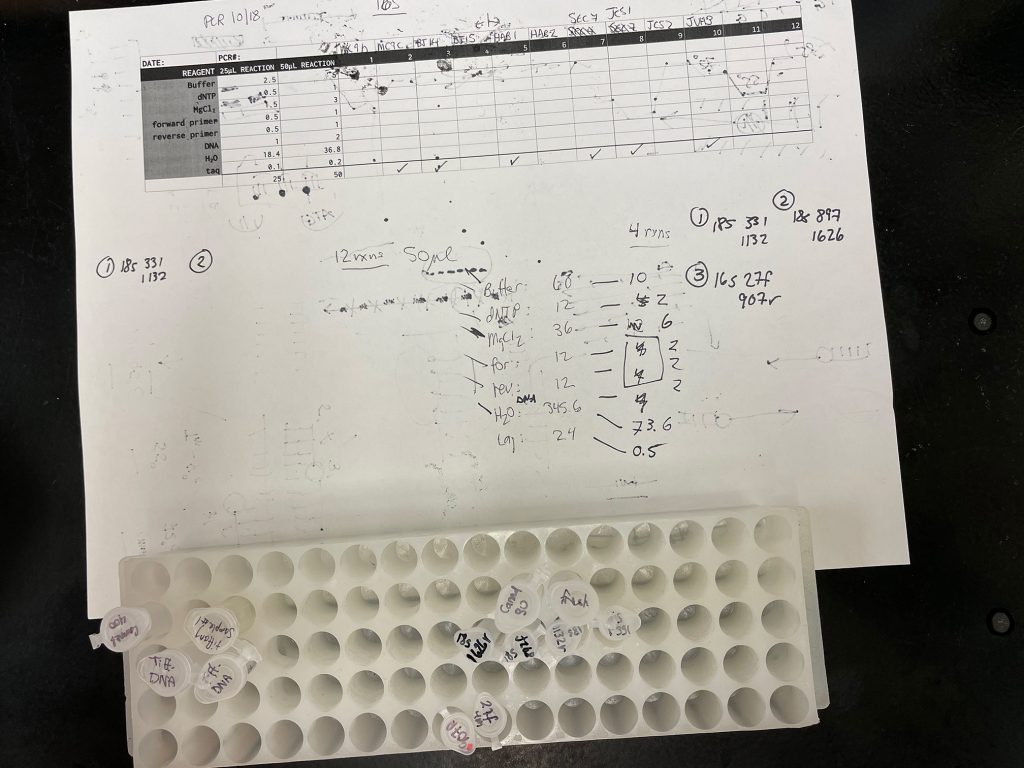
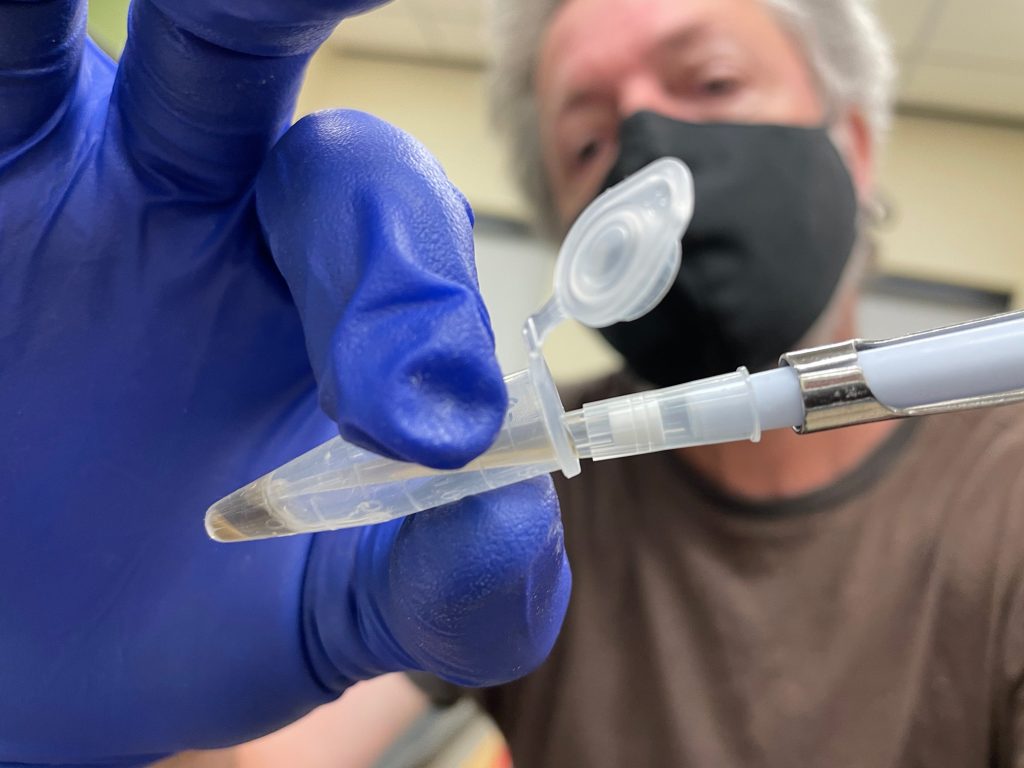
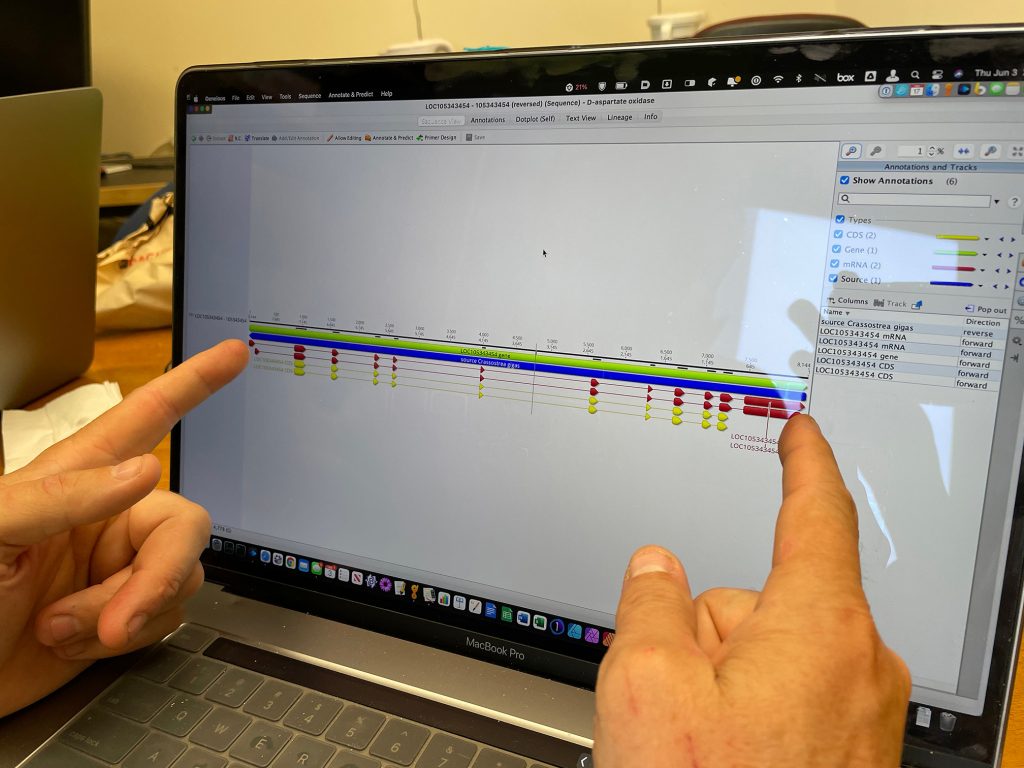
Early version of soft robotic prototype of an Aquadisia water dispenser created at Xenoform Labs in San Francisco, January 2020
Artist talk on the project in development as part of “Coalesce Disperse: Reports from the Lab”, Coalesce Center for Biological Art, University at Buffalo, May 8, 2020
Oyster anecdotes
Aquaculture statistics

Map of oyster fishing from 1880’s. Oysters are now nearly extinct off the coast of Germany and re-seeding efforts are underway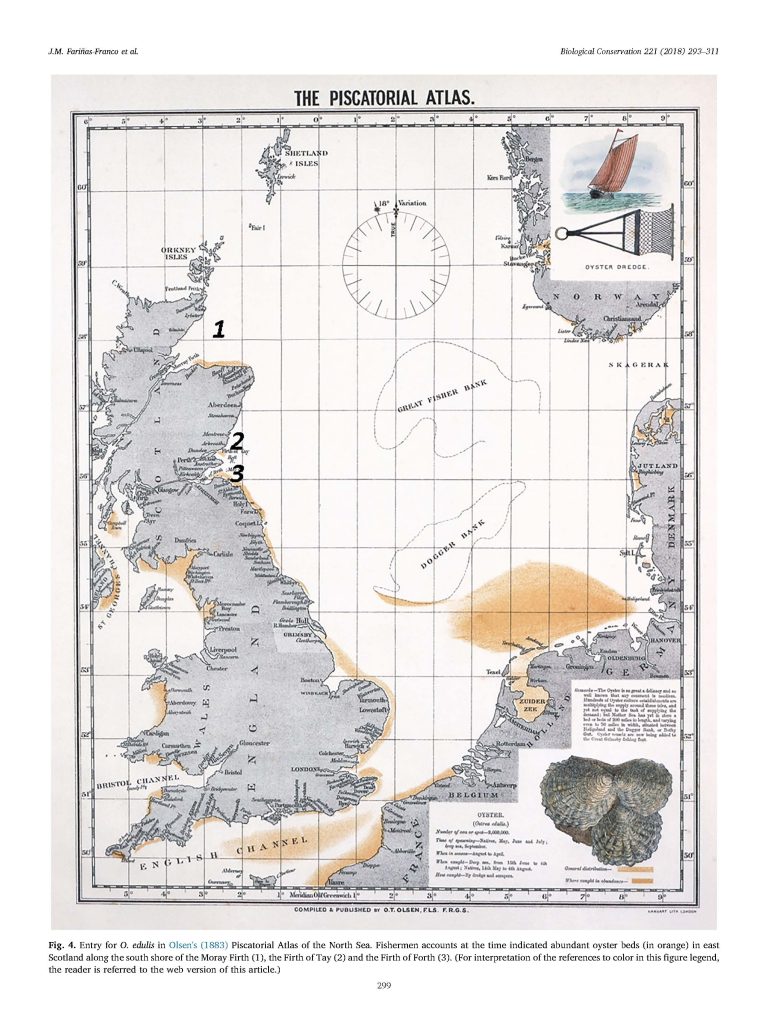 Marine wildlife, oyster beds on the sea floor near Ostend, vintage engraving
Marine wildlife, oyster beds on the sea floor near Ostend, vintage engraving
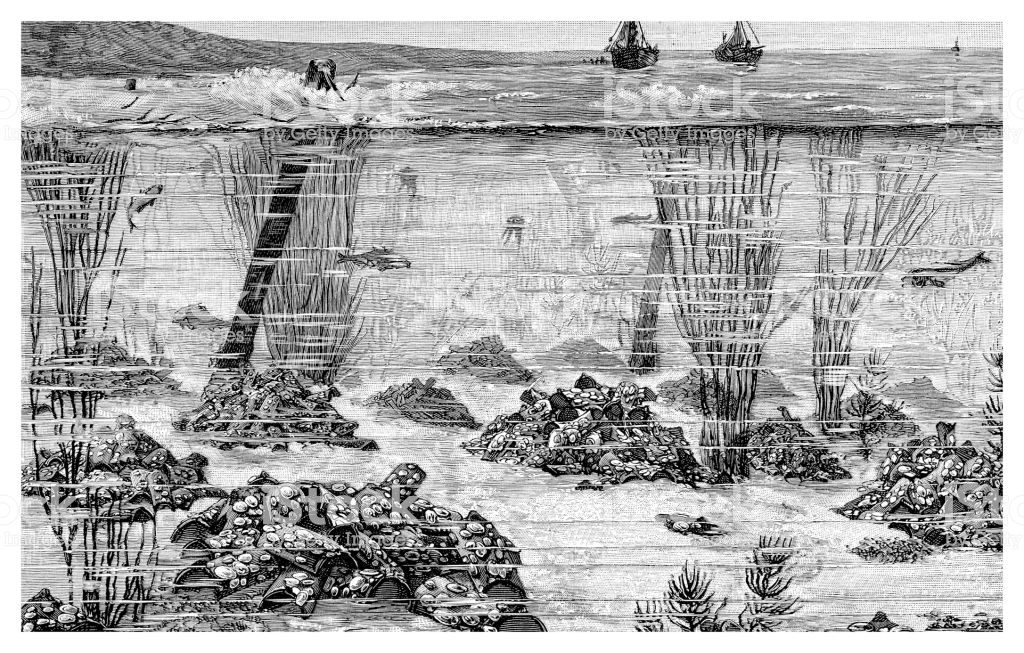
Dutch artist Jan Steen “Girl with Oysters”, 1658

The infamous Casanova (1725-1798) who claimed he ate 50 oysters for breakfast to enhance his libido.
